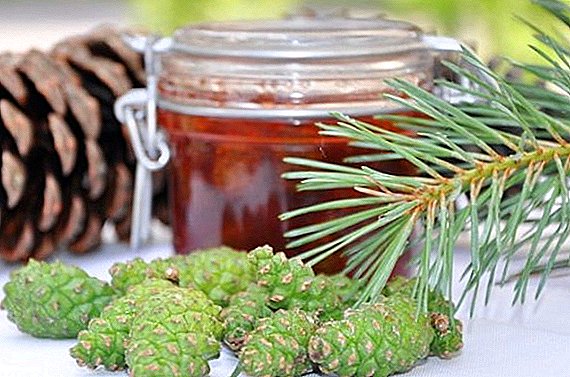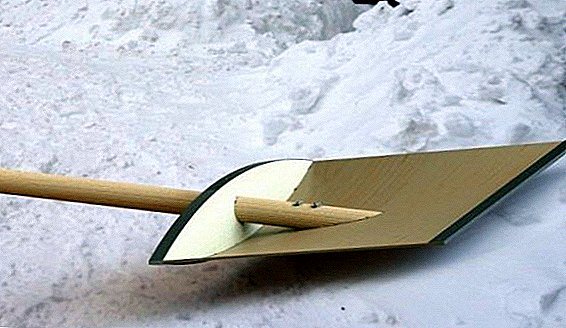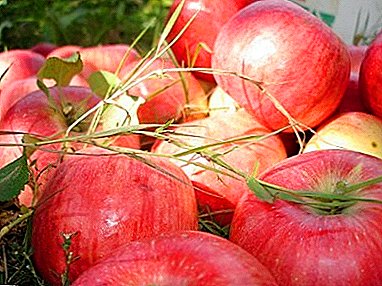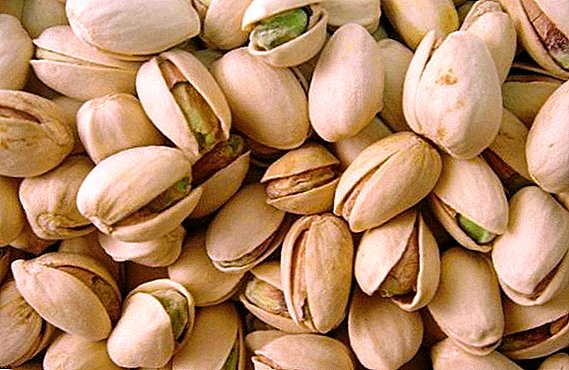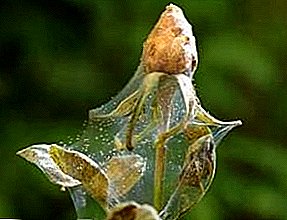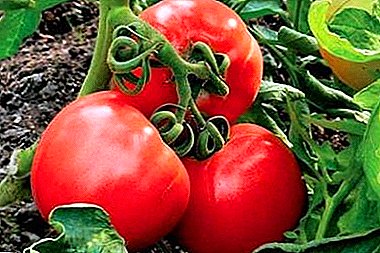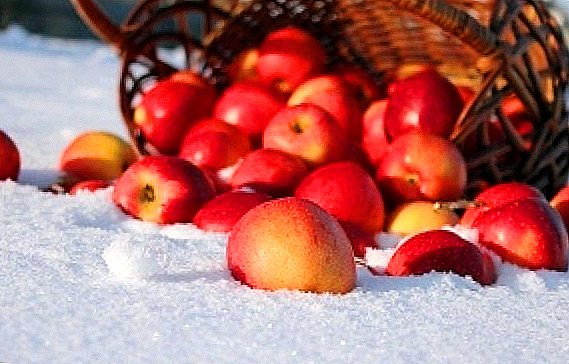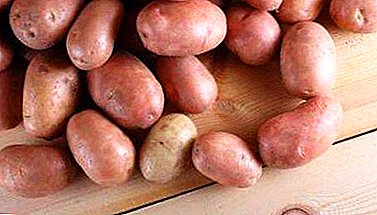
“Lilac Fog” is a very promising variety of Russian breeding.
Potatoes are grown on farms and private farms, beautiful and even tubers are ideal for sale.
In the article you will find a detailed description of the variety, the main characteristics and subtleties of agricultural technology, as well as learn what diseases and pests are affected by this potato.
Origin
 The variety of the Russian selection, is brought in the State registry of the Russian Federation in 2011. Originator - Primorsky NIISH.
The variety of the Russian selection, is brought in the State registry of the Russian Federation in 2011. Originator - Primorsky NIISH.
Zoned for the North-West and Far Eastern regions. Potatoes are recommended for cultivation in private subsidiary farms, on farms, possibly planted on industrial sites. Large, aligned by weight and size tubers are ideal for sale.
Tubers are not damaged when digging, they are stored for a long time.. Seed material does not degenerate, it can be collected on its own fields for several years in a row.
Potatoes "Lilac fog": description of the variety
| Grade name | Purple Haze |
| general characteristics | characterized by increased resistance to degeneration |
| Gestation period | 90-110 days |
| Starch content | 14,4-17,2% |
| Mass of commercial tubers | 90-160 |
| The number of tubers in the bush | 7-10 |
| Yield | 182-309 (maximum 495) |
| Consumer quality | good taste and cooking quality, suitable for cooking any dishes |
| Recumbency | 98% |
| Skin color | pink |
| Pulp color | light yellow |
| Preferred growing regions | North-West, Far East |
| Disease resistance | susceptible to the golden potato cyst nematode, moderately resistant to late blight and tuber pathogens |
| Features of growing | does not tolerate heat |
| Originator | North-West Research Institute of Agriculture (St. Petersburg, Russia) |
The grade belongs to mid-season dining rooms. The yield is high, depending on climatic conditions and nutritional value of the soil from 1 hectare, you can collect from 182 to 309 centners of selected potatoes. The maximum yield is fixed at 495 centners per hectare.
You can compare the yield of lilac fog with other varieties based on the data in the table:
| Grade name | Yield |
| Purple Haze | 182-309 c / ha |
| Margarita | 300-400 centners / ha |
| Alladin | 450-500 c / ha |
| Courage | 160-430 c / ha |
| Beauty | 400-450 c / ha |
| Grenada | 600 kg / ha |
| The hostess | 180-380 c / ha |
| Vector | 670 c / ha |
| Mozart | 200-330 c / ha |
| Sifra | 180-400 c / ha |
Harvested potatoes are stored for a long time without losing their commercial quality. The quality of tubers reaches 98%. Long distance transportation possible.
 The main thing to preserve the harvest is to create the right storage conditions.
The main thing to preserve the harvest is to create the right storage conditions.Read more about the storage of potatoes in the winter, on the balcony and in drawers, in the refrigerator and peeled. And also about the temperature and timing, about possible problems.
Bush intermediate type, high or very high, with moderately sprawling branches and abundant formation of green mass. The leaves are large, dark green, with slightly wavy edges. Corollas are large, collected from pink-purple, fast-falling flowers. Berry formation is low. The root system is powerful, 10-15 large potatoes are formed under each bush. The amount of non-competitive stuff is minimal.
In the table below you will find indicators of the main important characteristics of other varieties of potatoes for comparison with Lilac fog:
| Grade name | Mass of commodity tubers (grams) | Recumbency |
| Purple Haze | 90-160 | 98% |
| League | 90-125 | 93% |
| Milena | 90-100 | 95% |
| Elmundo | 100-135 | 97% |
| Serpanok | 85-145 | 94% |
| Svitanok Kiev | 90-120 | 95% |
| Cheri | 100-160 | 91% |
| Bryansk delicacy | 75-120 | 94% |
The variety is resistant to many dangerous diseases of the nightshade: potato cancer, leaf curling virus. Susceptibility to late blight, banded and wrinkled mosaic is average. Infection with the golden cyst nematode is possible.
Advantages and disadvantages
Among the main advantages of potato varieties “Lilac fog” note:
- good taste of tubers;
- high yield;
- harvested roots are well kept, transportation is possible;
- unpretentiousness;
- drought tolerance;
- Tubers have excellent commercial quality.
Among the shortcomings - susceptibility to some diseases and pest. Potatoes prefer fertile soils, in poor heavy soil yield is significantly reduced.
Specifications
- tubers are large, weighing from 90 to 160 g;
- round-oval shape;
- tubers are smooth, neat;
- the peel is red, evenly colored, moderately thin, smooth;
- eyes are superficial, shallow, few;
- the pulp on the cut is light yellow;
- high starch content, ranging from 14.4 to 17.2%;
- high content of protein, vitamins, valuable amino acids, beta carotene.
The taste of potatoes is very pleasant: rich, not watery, tender.
Potatoes can be baked, stewed, used to make fillings. For deep-frying is not suitable.
A photo
Below you will see the potato variety “Lilac fog in the photo:


Features of growing
Agrotechnika of this grade is standard. Landing is conducted in the second half of May, the soil should be completely warm. The first tubers can be broken in the middle of summer, but the bushes demonstrate the maximum yield at the end of the growing season.
Potatoes like light, fertile soil.. Periodic watering and single feeding is recommended. Read more about how to feed potatoes, when and how to apply fertilizer, how to do it when planting.
It is important to carefully spud plantings, forming high ridges and removing weeds. In the fight against weeds, mulching between rows will help.
Potato varieties Lilac Fog are planted in the second half of May, in fully warmed soil. Before planting, roots are pickled and treated with growth stimulants. Then the potatoes are germinated in the light or in wet sawdust.
Important: Cutting tubers before planting is not recommended, whole-plant planting significantly increases the yield.

Phacelia
Every 2-3 years, areas for planting need to be changed in order to avoid infection of tubers and not to reduce yield. The best precursors for potatoes are lupine, meadow grass, oilseed radish, legumes, or cabbage. The freed fields can be sown with fast-growing phacelia, which enriches the soil with useful microelements.
In moderately hot summer planting is recommended to water 1-2 times. In regions with a more arid climate, more frequent watering is needed. The variety quietly tolerates a short-term decrease in humidity, but the constant lack of water causes a shrinking of tubers.
 Being engaged in growing potatoes do not forget about spraying with different means.
Being engaged in growing potatoes do not forget about spraying with different means.Read in our articles all about fungicides, insecticides and herbicides, about their benefits and harms, the correct application.
For the season it is possible to feed once with superphosphate or diluted mullein. Overfeeding plants can not be, it contributes to the accumulation of nitrates in the roots. It is necessary to pile up the landing 2-3 times, forming high ridges. At the same time weeds are destroyed.
A week before harvesting, tops are removed from the potato, this will help the tubers to accumulate a maximum of nutrients. Harvested potatoes are dried in a mile or under a canopy, sorted, and then harvested for storage.
There are many ways to grow potatoes. On our site you will find detailed information about modern Dutch technology and obtaining a good harvest without weeding and hilling, learn how to properly grow early varieties and apply methods under straw, in bags, in barrels, in boxes.
Diseases and pests

Striped mosaic
For the prevention of tubers pickled before planting, the soil carefully loosened, choosing from her the remains of plants. During the period of late blight epidemic, the treatment of plantings with copper preparations is useful. From the root rot and black legs helps the introduction of wood ash in the soil.
Read also about Alternaria, Fusarium, Verticilliasis and scab.
Potatoes can suffer from insect pests. Most often these are Colorado beetles and their larvae, potato moths, bears and wireworms.
Read about pest control methods on our website.:
- How to get rid of the wireworm.
- Chemistry and folk methods against the Colorado potato beetle.
- What will help from the potato moth.
- Medvedka: how to use chemicals and folk remedies.
Industrial insecticides with which the affected bushes are sprayed will also help protect the planting. It is necessary to remove weeds in a timely manner, it is recommended to row the aisles with straw or mowed grass.
Potatoes "Lilac Fog" - an excellent choice for gardeners. The variety is unpretentious, crops, tubers can be sold or used for personal use. In addition, the potato is very economical, because the seed does not need frequent updating.
Below in the table you will find links to materials about potatoes with different ripening terms:
| Mid-season | Medium early | Middle late |
| Santana | Tiras | Melody |
| Desiree | Elizabeth | Lorch |
| Openwork | Vega | Margarita |
| Purple Haze | Romano | Son |
| Yanka | Lugovskoy | Lasock |
| Tuscany | Tuleyevsky | Aurora |
| Giant | Manifesto | Zhuravinka |


